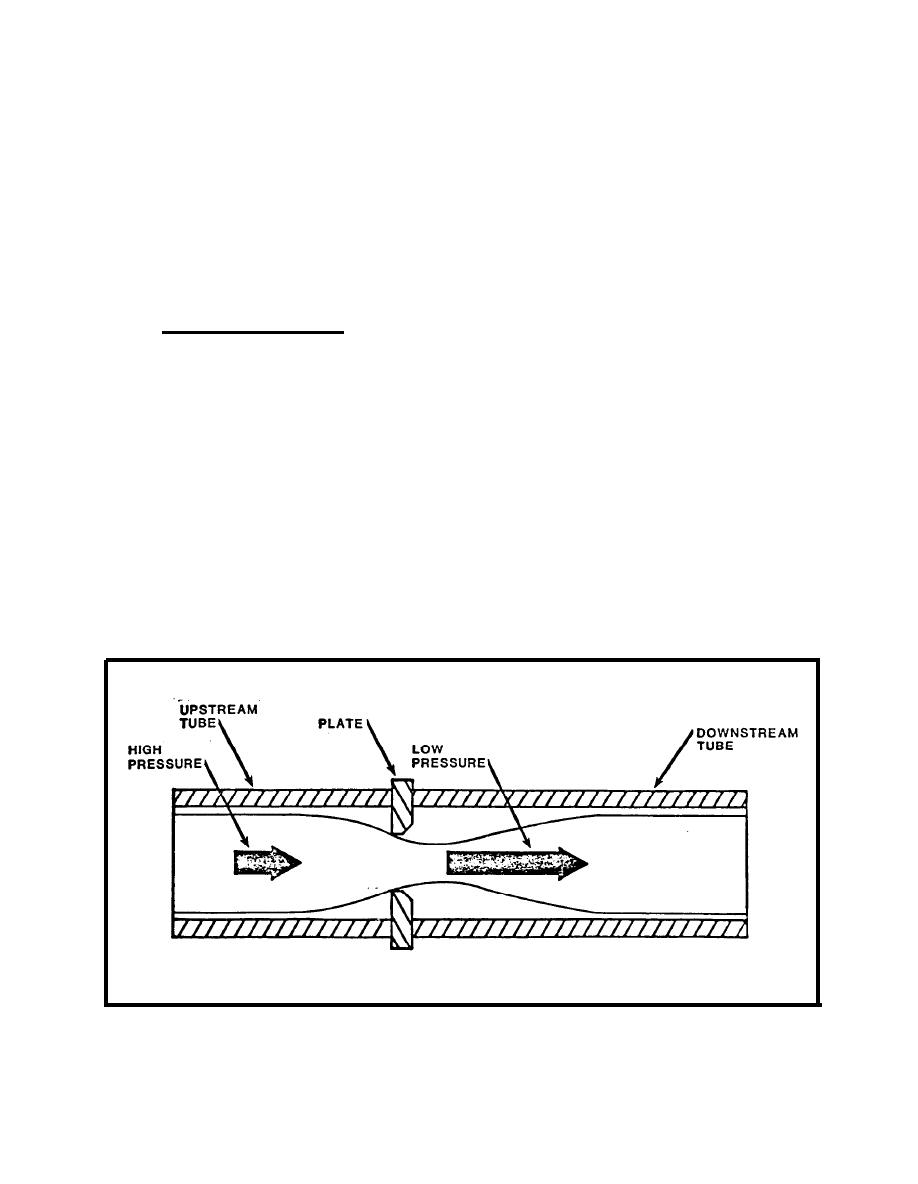

Custom Search
|
|

|
||
 CHAPTER 5.
DIFFERENTIAL PRESSURE METERS
Section 1.
ORIFICE PLATE METERS
1. INTRODUCTION. Orifice plate meters are the most common meter used in
industry today. It is estimated that over 50 percent of the devices used for
measuring fluids are orifice plate type. The widespread use of orifice plates
provides a great deal of background and operational experience in a variety of
situations.
1.1 Operating Principles. Orifice plates can be used to measure flow because
of the velocity-pressure relationship that exists in a flowing fluid. When a
restriction, such as an orifice plate, is inserted into a stream, the fluid
velocity must increase when passing through the restriction. The increase in
velocity is accompanied by a proportional drop in pressure on the downstream
side of the orifice plate (Figure 5-l). Since the pressure drop across the
meter is proportional to the square of the flow rate, it is possible to
calculate the flow rate by measuring the differential pressure (alp) before and
after the orifice. Instruments of this type are known as inferential meters
as they do not physically measure the flow, but rather "infer's it from the
known relationship between pressure and velocity.
2. METER DESIGNS. There are different orifice plate designs such as
square-edged, one-quarter circle, and conical. For the q ajority of flow
measurements involving gases, air, steam, and water, the square-edged orifice
plate is used. Other configurations are primarily designed to address
particular situations such as high viscosity, erosive fluids, and fluids
containing suspended material.
FIGURE 5-1.
Typical Orifice Plate Conditions
5-1
|
 |
|
 |
||